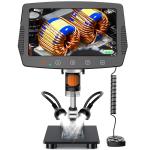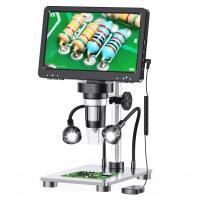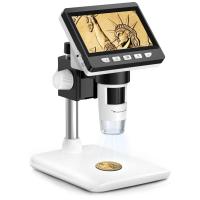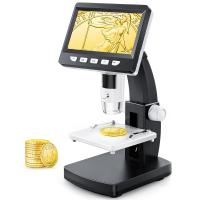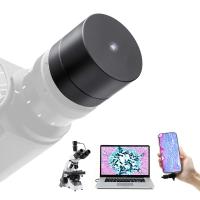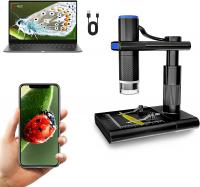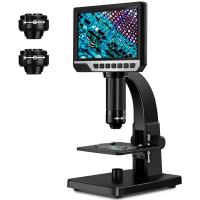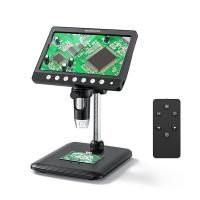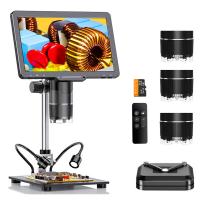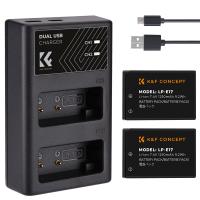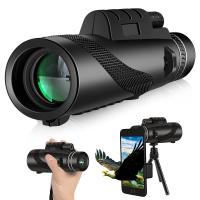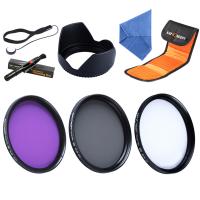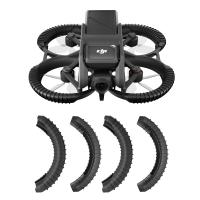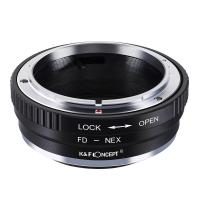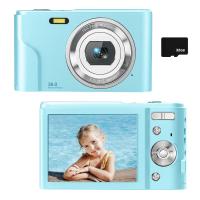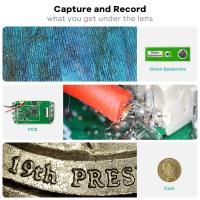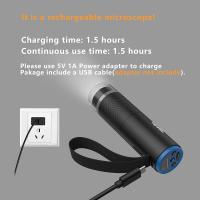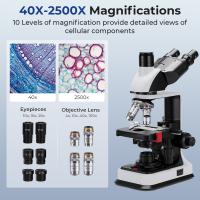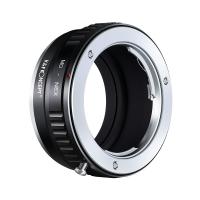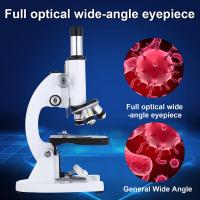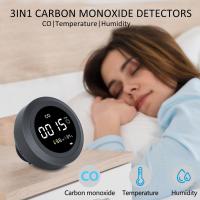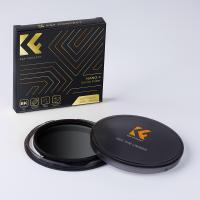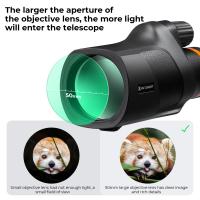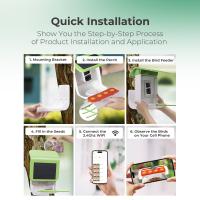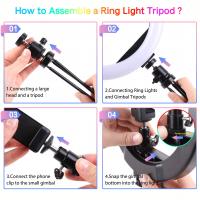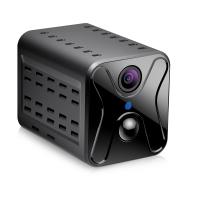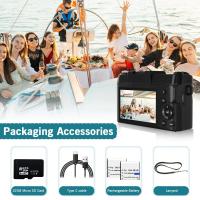Reviews
Great tool with small problems
The K&F Concept is a really good product with really small problems, but they can be solved easily and without extra charge. The 3D in the product name is of course wrong. The image is 2D and it takes a bit of practice before you can actually hit the components or the solder seen through the screen. It's still a screen and a camera.
The setup is easy. The wiring is a bit confusing and requires a couple of zip ties that are not included.
The first problem is the jack plug for the lighting. If you don't need the lamps, leave them and the lamps off, but most users will not want to do without the lamps. The protruding plug increases the space requirement on the workbench. Also, moving the microscope while using the plug to collect things on the table will constantly drag him left or right. Simple solution: loosen the two screws under the plate and turn the cover including the plug inwards. Be careful with the thin cables inside the box. They are very fine and should not be pinched. Once the screws are back in, nothing can happen and the connector is hidden under the base plate. I have no idea why it isn't installed in advance.
To enlarge the base you can also mount the arm the wrong way round. This is useful if you want to get mainboards under the camera. Especially here the above modification is useful, because the connector does not interfere. However, you should put some weight on the plate. You can now work on your silicone mat for this.
The height is an issue. If you bring the maximum distance between the circuit board and the lens, then you have to screw the camera to the lens ring. Not only does this sound bad, but it also provides a decent lever that will damage the camera if you move it clumsily. I used the 3D printer to print an extension with a mount that doesn't need any screws at all. The model can be found on relevant model sites under the user "Geit_de".
Once you have completed the assembly and eliminated the small problems, you have a device with which you can work wonderfully. I have already done some SMD work and this microscope is also ideal for checking something quickly or just being able to read the imprints on power supplies.
The cable remote control for the brightness is actually not needed and is probably due to the fact that two products (microscope and gooseneck lamp) were thrown together. The wireless IR remote control, on the other hand, does not make sense at first glance because you can do all the settings with the buttons on the display. However, as soon as you use the recording function or operate a large display or even a projector via the HDMI output, it looks more professional if you use the remote control, because every keystroke shakes the device and the resulting image shakes and the recordings or display are blurred.
Despite the small flaws described above, I am satisfied with the price-performance ratio. Of course you can build something like this yourself today with a little tinkering and components from China, but that takes time that you actually want to invest in repairs and other soldering work. Whether the result looks professional is another matter.
100% buy recommendation from me.
The setup is easy. The wiring is a bit confusing and requires a couple of zip ties that are not included.
The first problem is the jack plug for the lighting. If you don't need the lamps, leave them and the lamps off, but most users will not want to do without the lamps. The protruding plug increases the space requirement on the workbench. Also, moving the microscope while using the plug to collect things on the table will constantly drag him left or right. Simple solution: loosen the two screws under the plate and turn the cover including the plug inwards. Be careful with the thin cables inside the box. They are very fine and should not be pinched. Once the screws are back in, nothing can happen and the connector is hidden under the base plate. I have no idea why it isn't installed in advance.
To enlarge the base you can also mount the arm the wrong way round. This is useful if you want to get mainboards under the camera. Especially here the above modification is useful, because the connector does not interfere. However, you should put some weight on the plate. You can now work on your silicone mat for this.
The height is an issue. If you bring the maximum distance between the circuit board and the lens, then you have to screw the camera to the lens ring. Not only does this sound bad, but it also provides a decent lever that will damage the camera if you move it clumsily. I used the 3D printer to print an extension with a mount that doesn't need any screws at all. The model can be found on relevant model sites under the user "Geit_de".
Once you have completed the assembly and eliminated the small problems, you have a device with which you can work wonderfully. I have already done some SMD work and this microscope is also ideal for checking something quickly or just being able to read the imprints on power supplies.
The cable remote control for the brightness is actually not needed and is probably due to the fact that two products (microscope and gooseneck lamp) were thrown together. The wireless IR remote control, on the other hand, does not make sense at first glance because you can do all the settings with the buttons on the display. However, as soon as you use the recording function or operate a large display or even a projector via the HDMI output, it looks more professional if you use the remote control, because every keystroke shakes the device and the resulting image shakes and the recordings or display are blurred.
Despite the small flaws described above, I am satisfied with the price-performance ratio. Of course you can build something like this yourself today with a little tinkering and components from China, but that takes time that you actually want to invest in repairs and other soldering work. Whether the result looks professional is another matter.
100% buy recommendation from me.
02/05/2025
Related products
Recommended products
A$14.39
Related articles
Recommended articles
Popular searches
Digital Microscope With Lcd And Camera
Portable Lcd Digital Microscope
Iphone Compatible Digital Microscope
Microscope With Digital Display
Best Digital Microscope For Windows 10
Stereo Microscope With Digital Camera
Optical Microscope With Camera
Best Digital Microscope With Screen
Digital Microscope For Coins
Binocular Microscope With Camera Price

